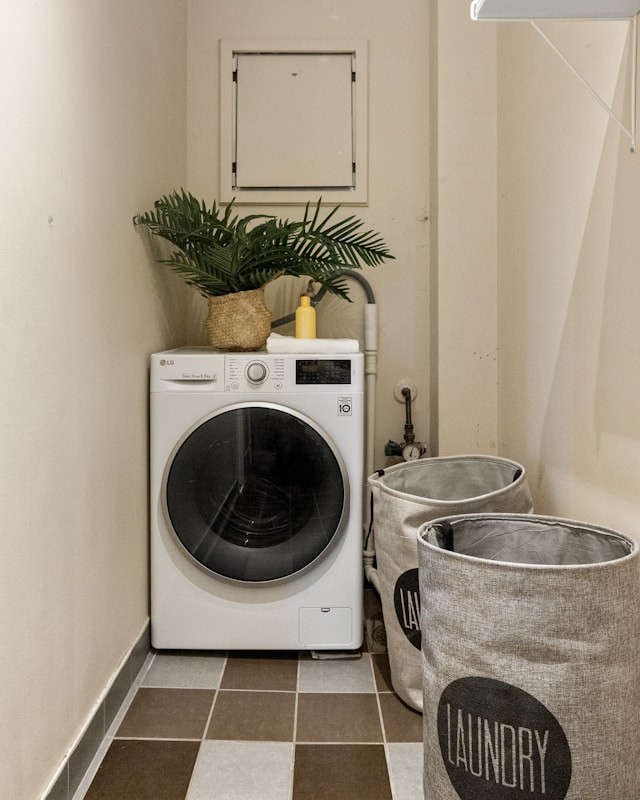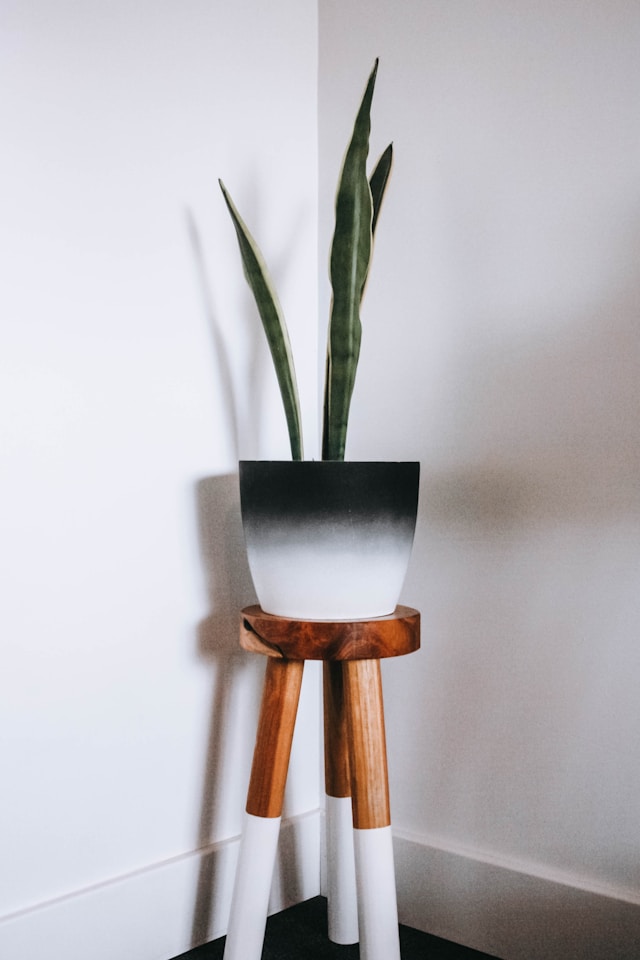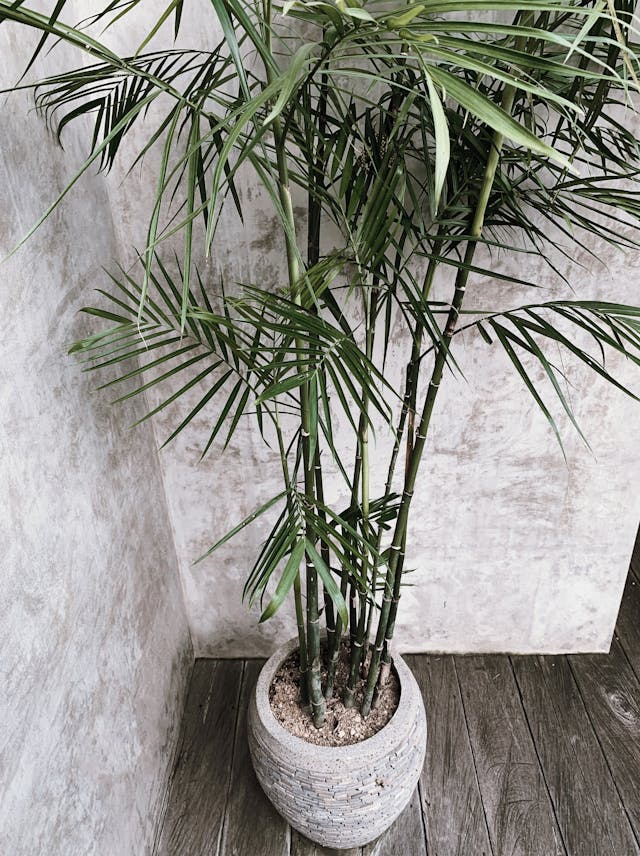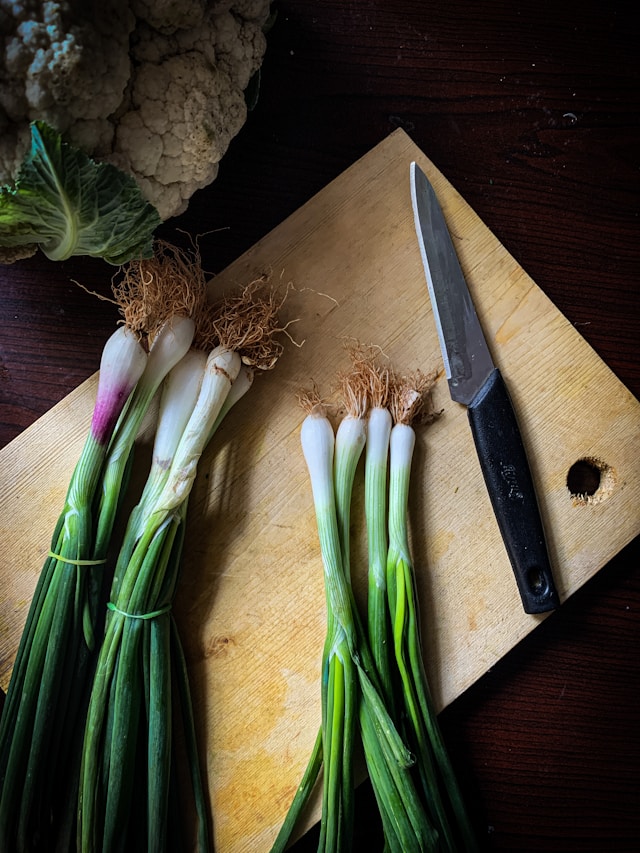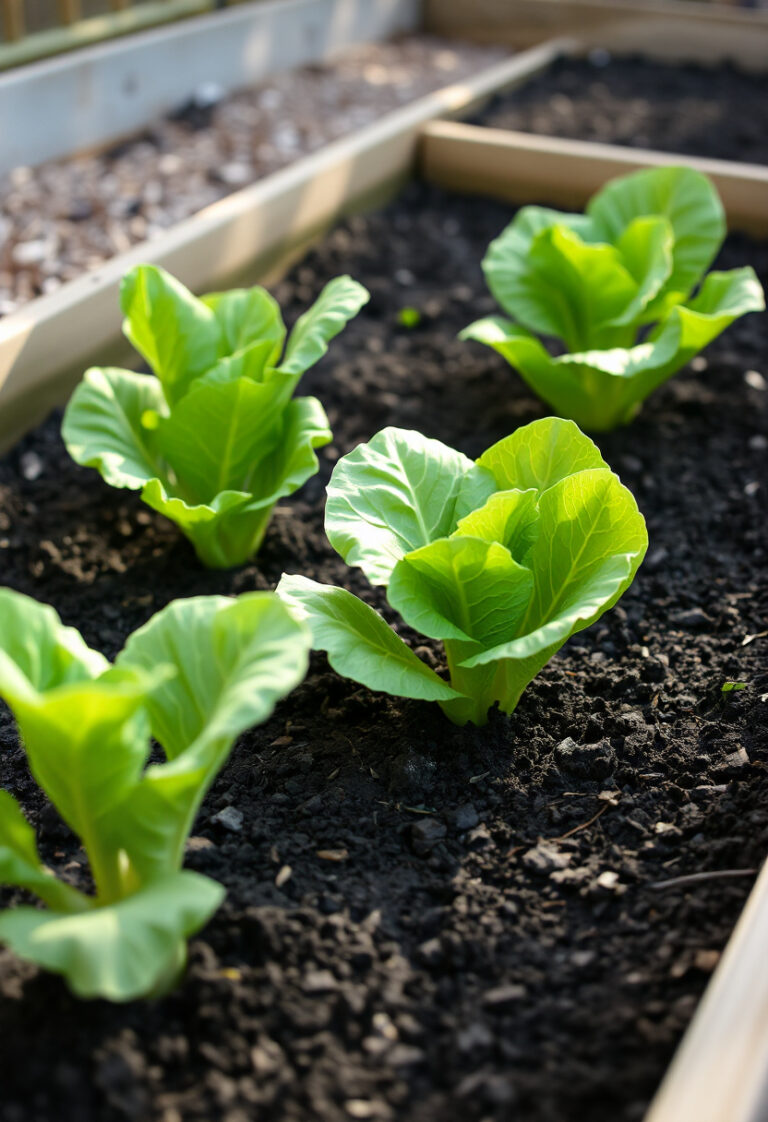Transforming compact outdoor areas into green spaces requires creative thinking and smart design choices. A vertical garden offers an ingenious solution for homeowners working with limited square footage. Whether you have a tiny balcony, narrow patio, or small backyard, these vertical gardening concepts can help you maximize your growing potential while adding natural beauty to your space.
Understanding Vertical Gardens
A vertical garden utilizes wall space or vertical structures to grow plants upward rather than outward. This approach allows you to cultivate herbs, vegetables, flowers, and foliage in areas where traditional horizontal gardens wouldn’t fit. The concept works exceptionally well for urban dwellers and anyone seeking to make the most of their outdoor real estate.
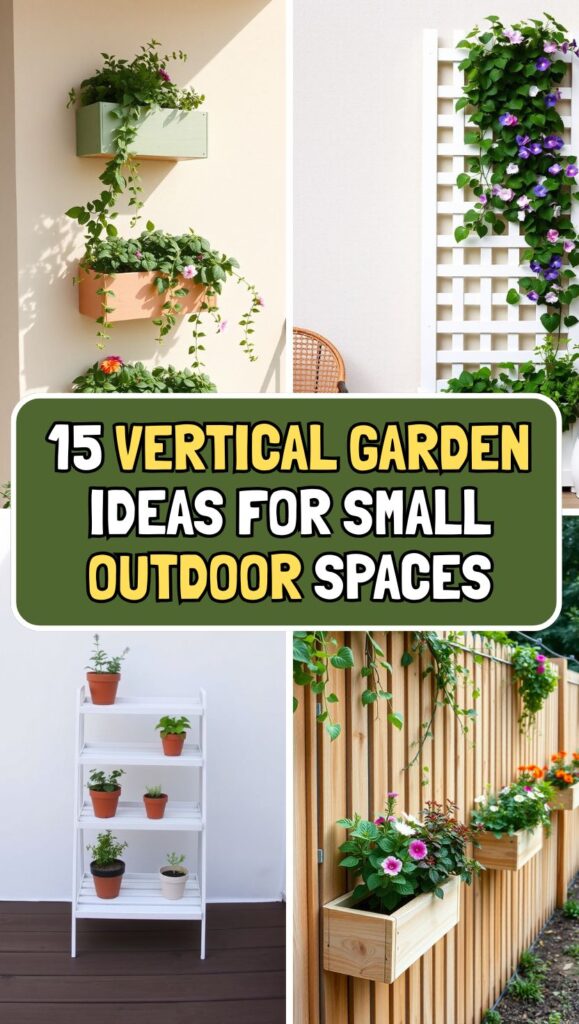
1. Wall-Mounted Pocket Planters
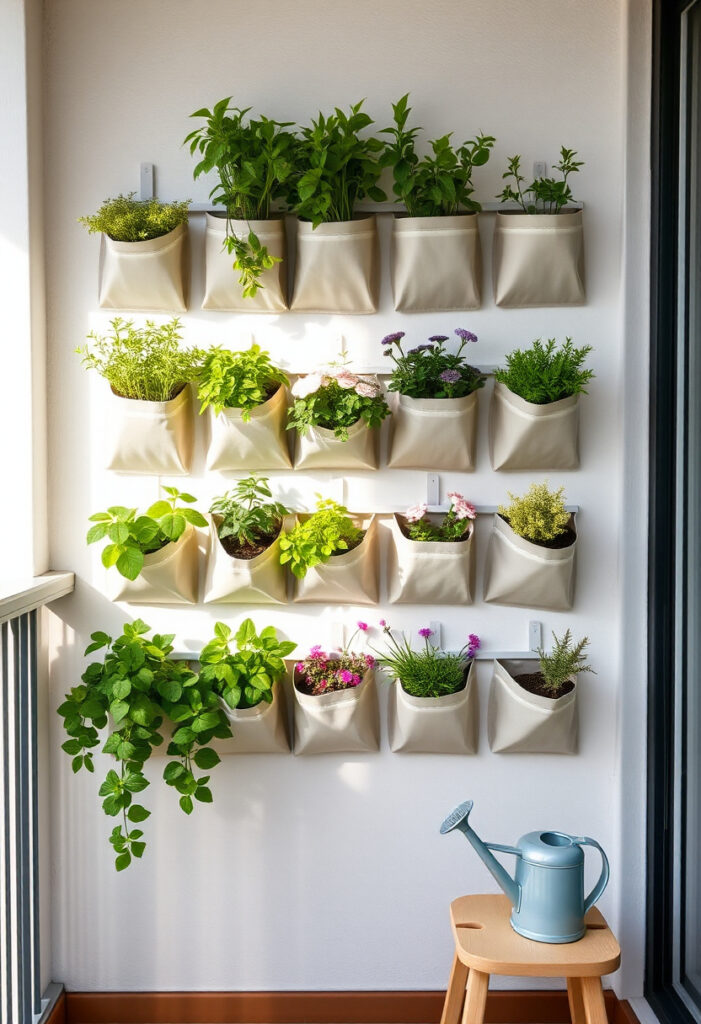
Fabric pocket planters attach directly to walls or fences, creating an instant vertical garden system. These lightweight options work well for herbs, small vegetables, and cascading plants. Choose weather-resistant materials that allow proper drainage while maintaining soil moisture.
2. Repurposed Pallet Gardens
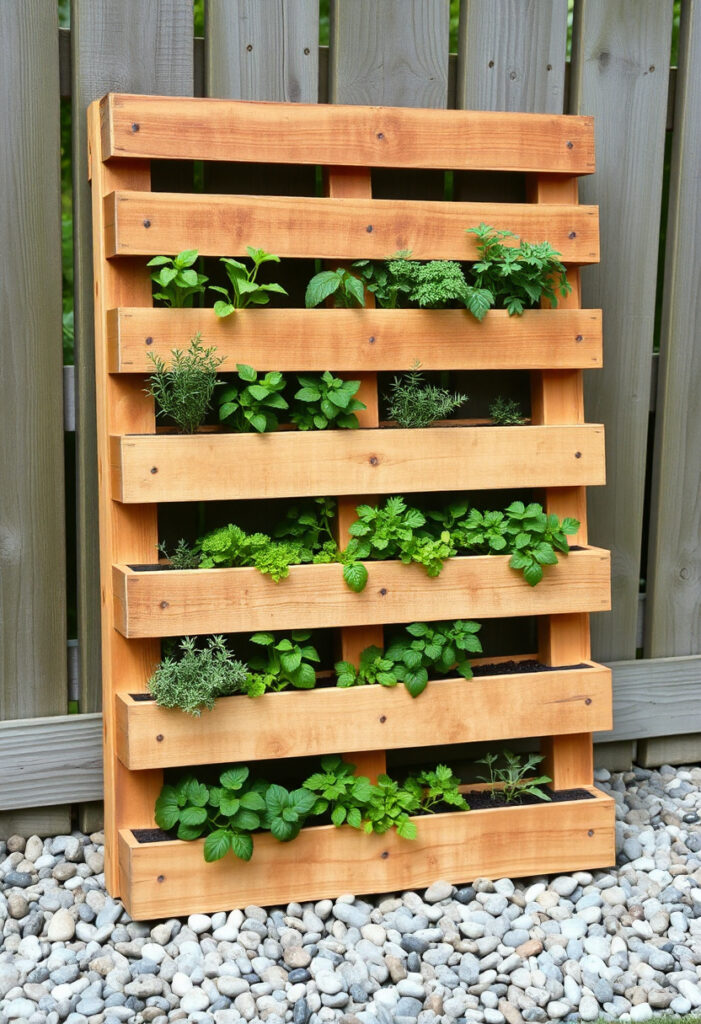
Transform wooden shipping pallets into functional vertical planting systems. Sand and seal the wood, then add landscape fabric backing to hold soil. Plant directly in the slats or attach small containers for easy maintenance and plant rotation.
3. Ladder Plant Stands
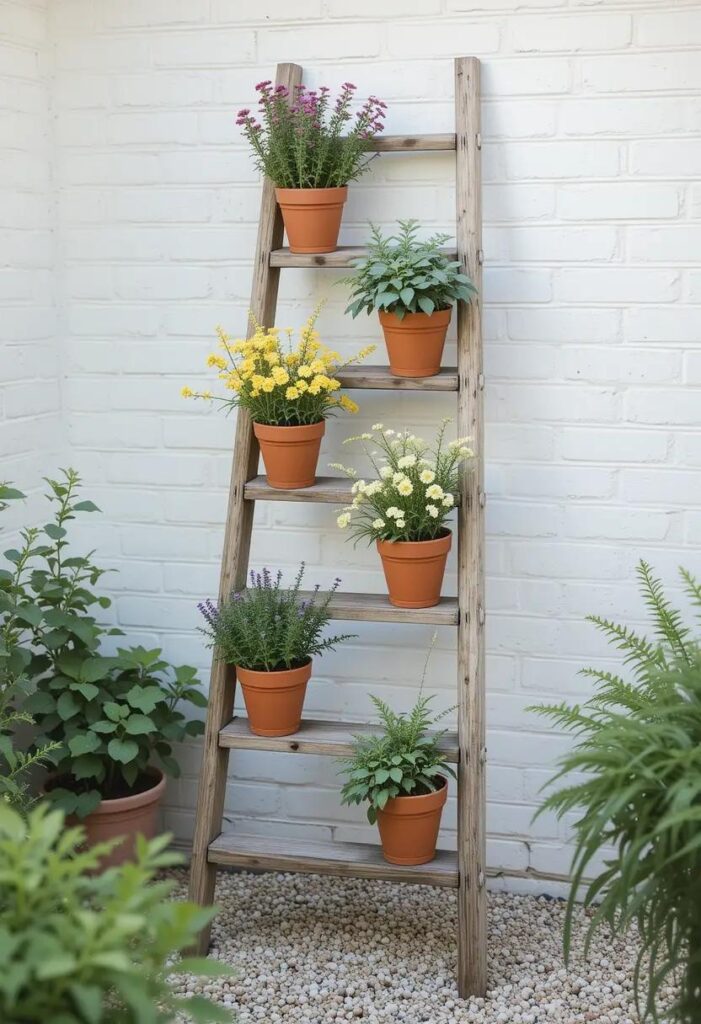
Old wooden ladders make excellent tiered garden displays. Place potted plants on each rung, creating varying heights for visual interest. This approach works particularly well for displaying seasonal flowers or creating herb gardens at different levels.
4. Trellis and Climbing Plants
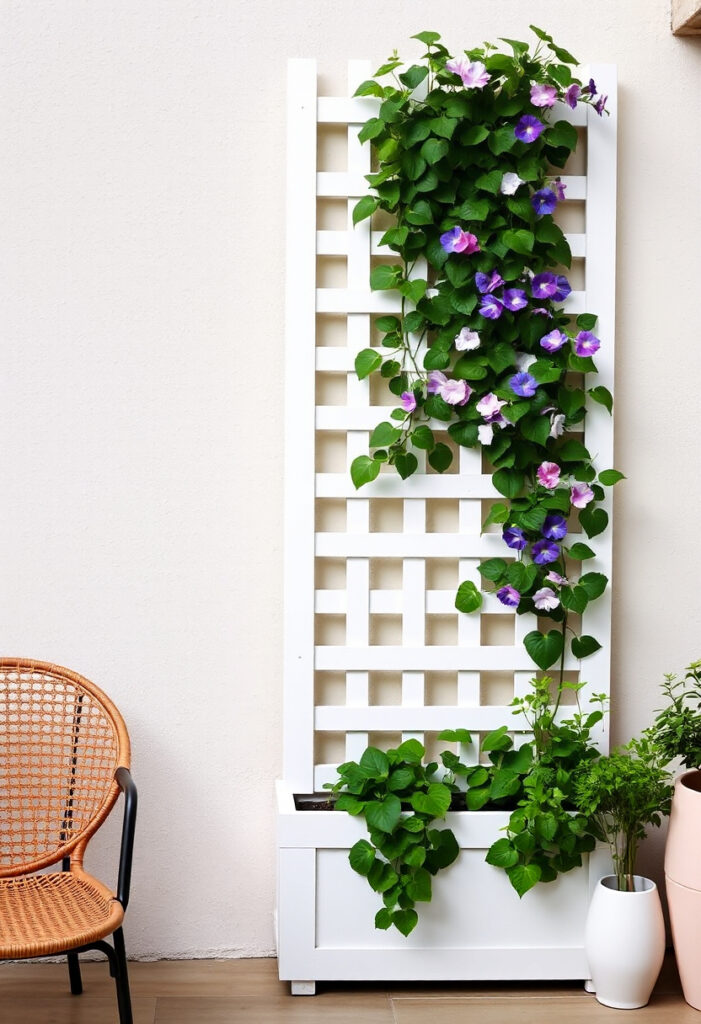
Install sturdy trellises against walls or fences to support climbing vegetables and flowering vines. Plants like peas, beans, cucumbers, and morning glories naturally grow upward, making them ideal candidates for vertical spaces.
5. Hanging Basket Towers
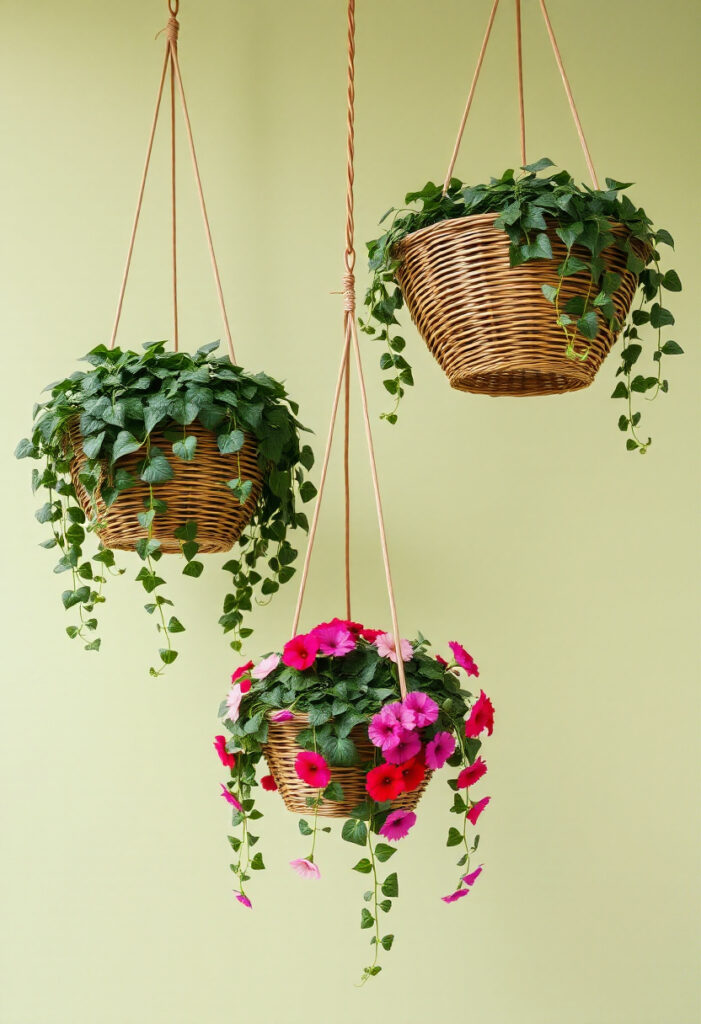
Stack multiple hanging baskets at different heights to create a cascading garden tower. Use varying basket sizes and plant trailing varieties that will spill over the edges, creating a lush, layered effect.
6. Gutter Gardens
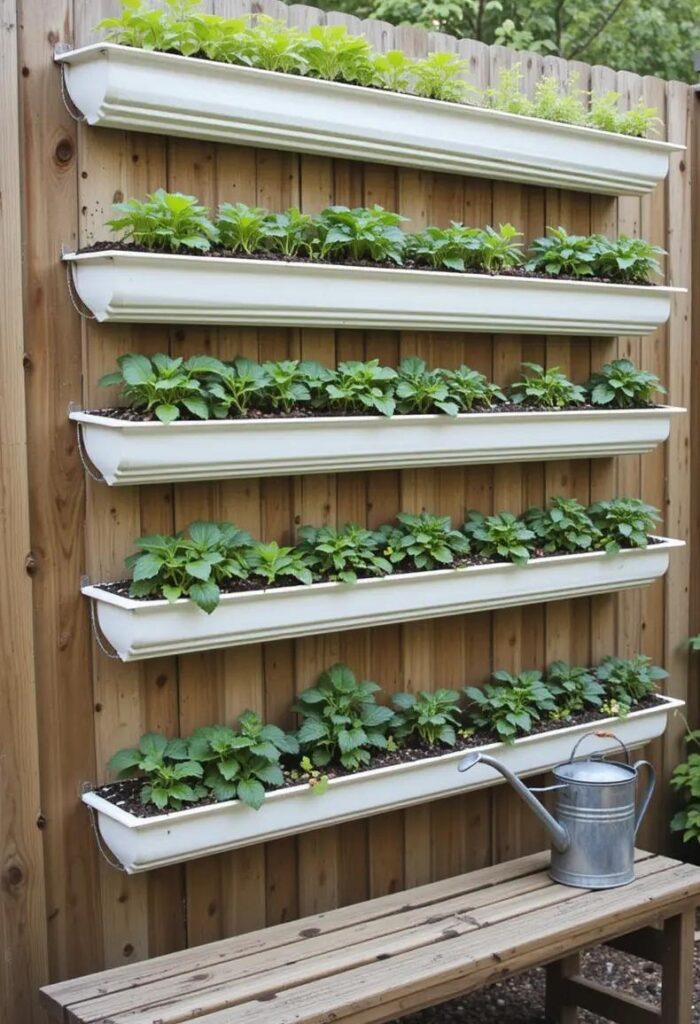
Repurpose rain gutters as horizontal planters mounted at various heights on walls. These work exceptionally well for shallow-rooted plants like lettuce, herbs, and strawberries. Ensure proper drainage holes and secure mounting.
7. Tower Garden Systems
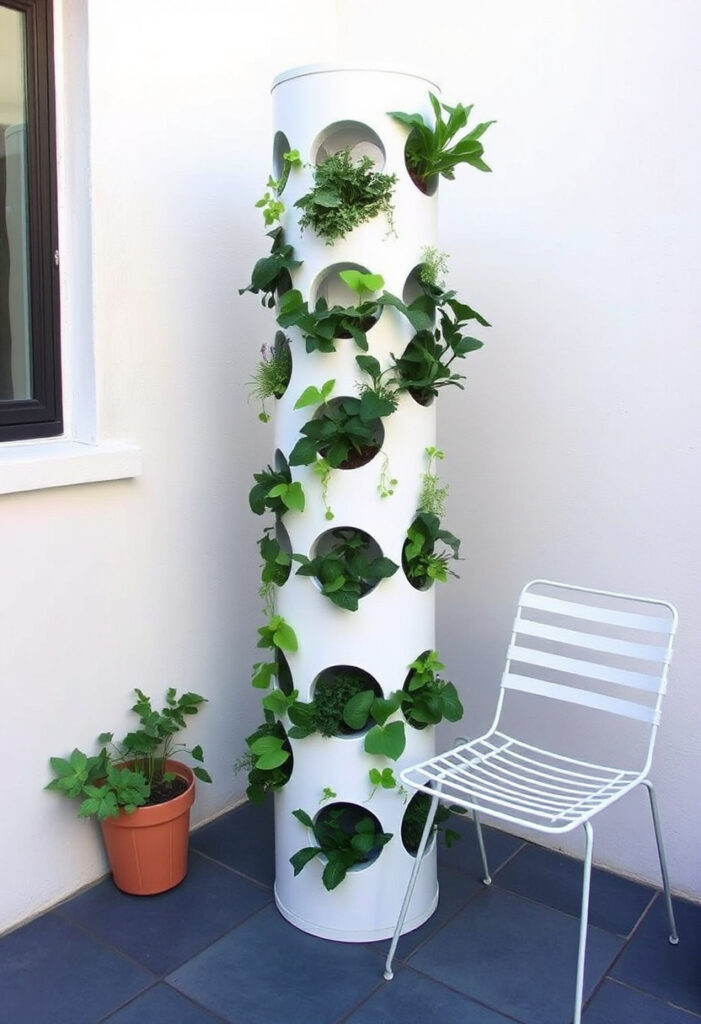
Commercial tower garden structures offer a sophisticated approach to vertical growing. These systems often include built-in irrigation and can accommodate numerous plants in a small footprint, making them ideal for serious gardeners with limited space.
8. Stackable Planter Boxes
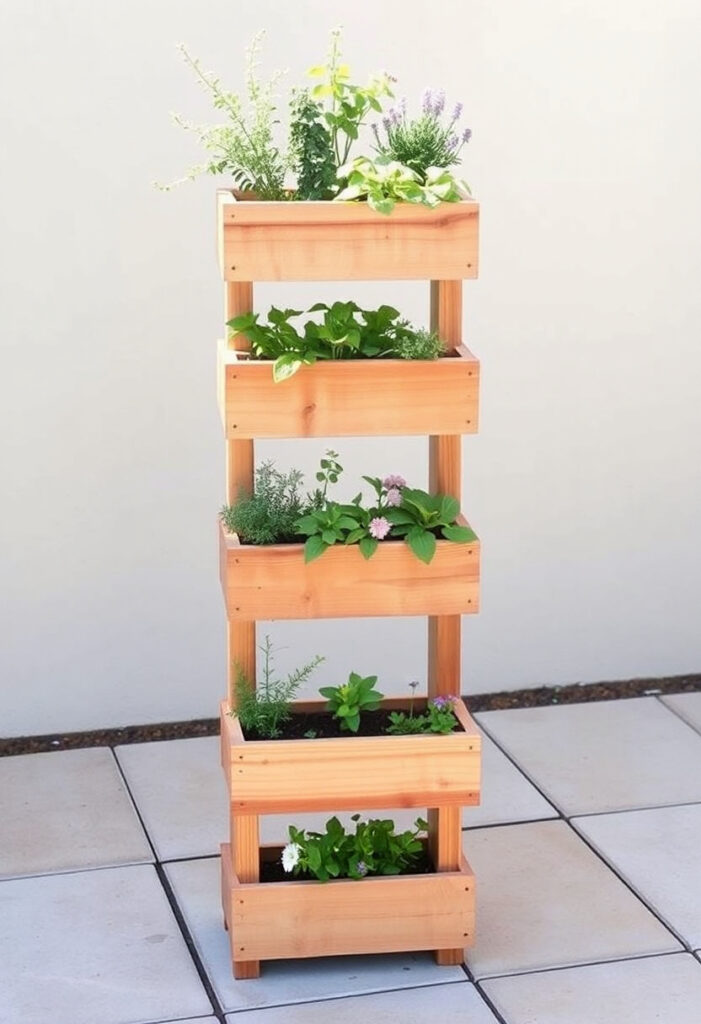
Create multi-level garden towers using stackable wooden or plastic planter boxes. Each level can house different plants, creating distinct growing zones for herbs, vegetables, or flowers while maintaining easy access for maintenance.
9. Window Box Vertical Arrangements

Mount multiple window boxes at staggered heights along walls or railings to create layered planting displays. This classic approach works well for herbs, small vegetables, and trailing flowers while maintaining easy access for harvesting.
10. Shoe Organizer Planters
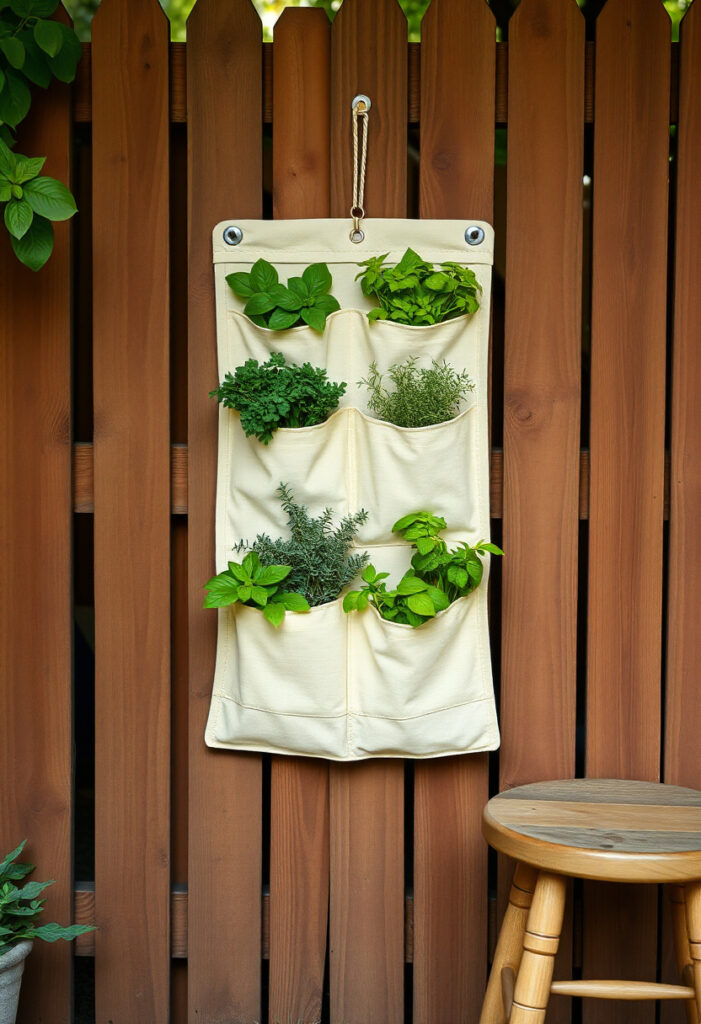
Over-the-door shoe organizers with clear pockets make surprisingly effective vertical herb gardens. Hang them on walls or fences, ensuring adequate drainage holes in each pocket.
11. Wire Grid Systems

Install wire grids or mesh panels on walls to create flexible planting surfaces. Attach various sized containers and planters to the grid, allowing for easy rearrangement and seasonal changes.
12. Wall-Mounted Shelving Units
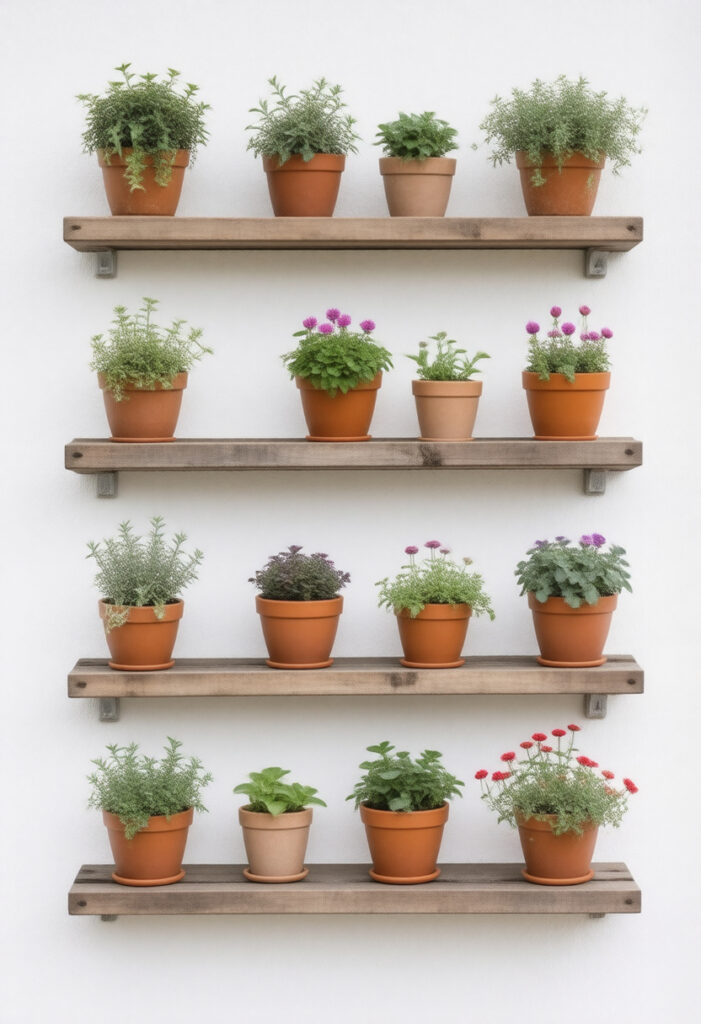
Install weatherproof shelving against walls to create multiple growing levels. This approach allows for easy access to plants and provides flexibility in container sizes and arrangements.
13. Fence Line Gardens
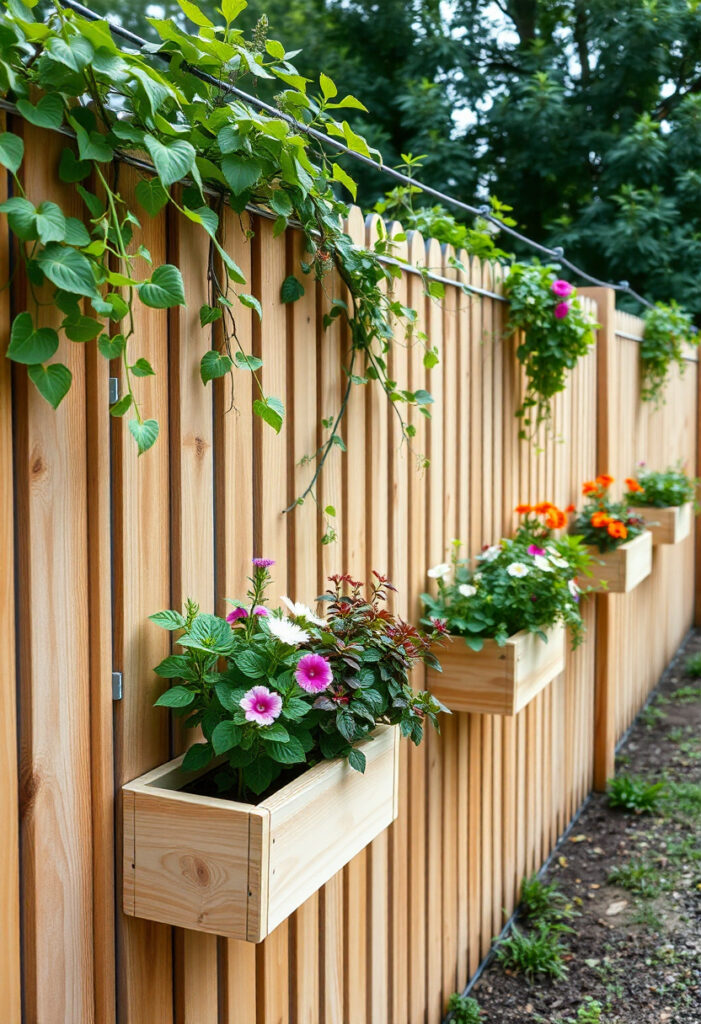
Utilize existing fences by adding mounted planters and climbing supports. This approach maximizes boundary areas that might otherwise remain unused while adding privacy and greenery.
14. Tiered Plant Stand Systems
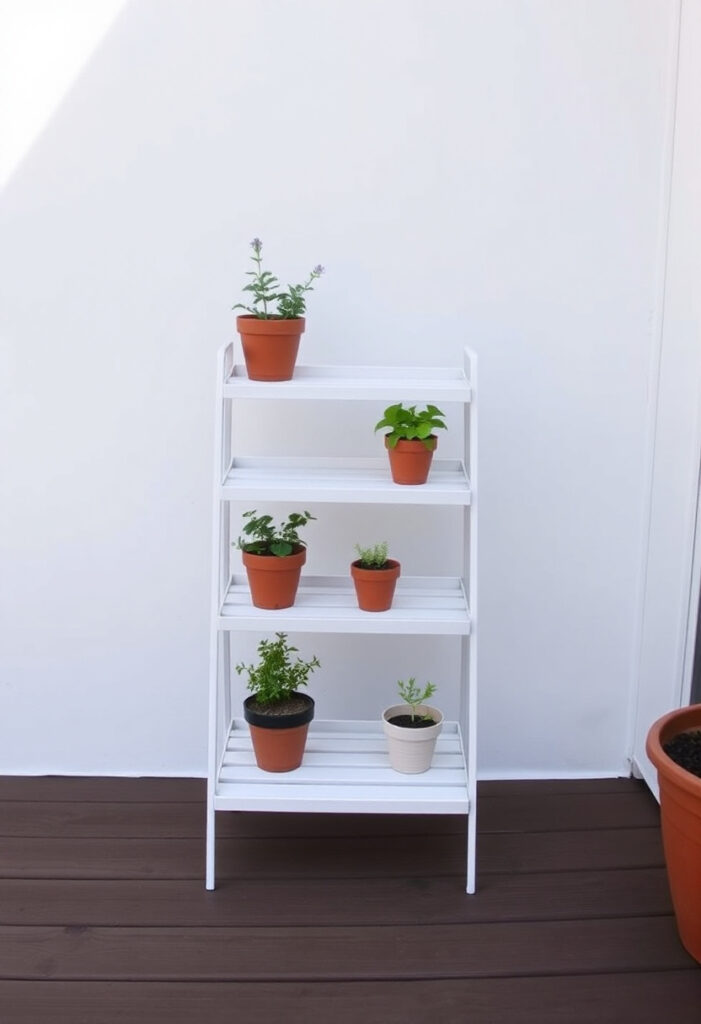
Multi-level plant stands create ascending garden displays that maximize growing space in corners or against walls. These freestanding units accommodate various pot sizes and can be moved seasonally as needed.
15. Living Screen Dividers
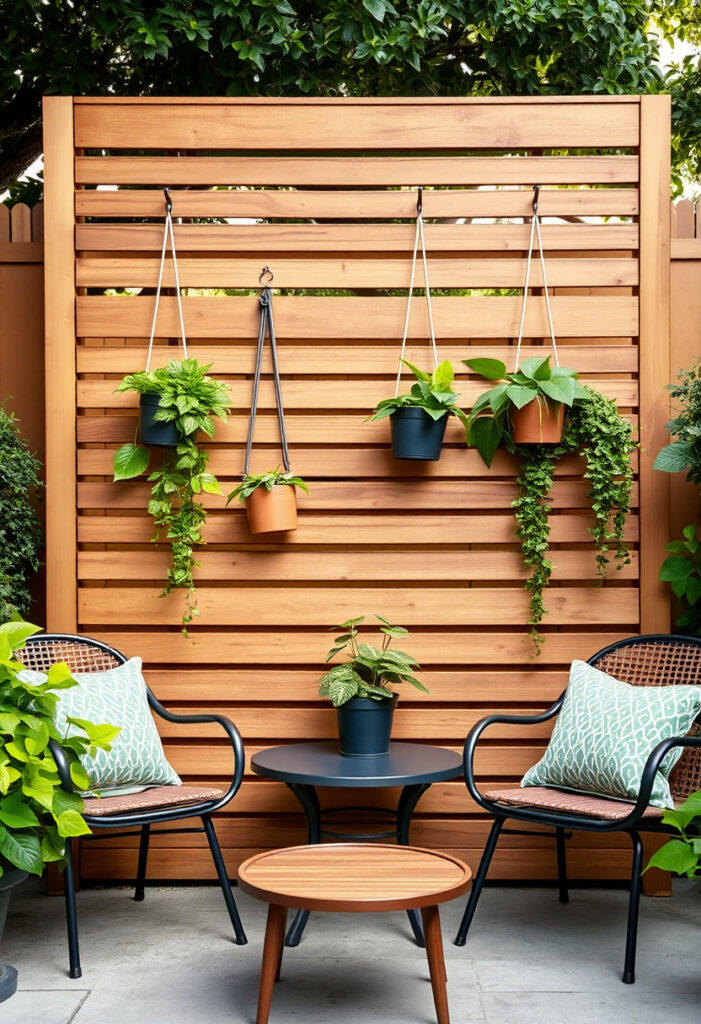
Create plant-covered screens that serve dual purposes as privacy barriers and growing spaces. Use lightweight frames with climbing plants or mounted containers to achieve this functional design.
Planning Your Vertical Garden
Before implementing any vertical garden concept, consider these essential factors:
Sunlight Requirements: Evaluate how much direct sunlight your space receives throughout the day. Most vegetables and flowering plants need 6-8 hours of direct sun, while some herbs and leafy greens can tolerate partial shade.
Water Access: Plan for easy watering access, as vertical gardens may require more frequent irrigation than ground-level plantings. Consider installing drip irrigation systems for larger installations.
Weight Considerations: Ensure walls and mounting surfaces can support the weight of soil, plants, and water. Wet soil is significantly heavier than dry soil.
Plant Selection: Choose plants appropriate for your climate, space constraints, and maintenance preferences. Consider mature plant sizes and growth habits when planning layouts.
Maintenance Tips for Success
Regular Watering: Vertical gardens typically dry out faster than traditional gardens due to increased air circulation and drainage. Monitor soil moisture daily, especially during hot weather.
Fertilization Schedule: Container plants require regular feeding since nutrients leach out through drainage. Use slow-release fertilizers or establish a regular liquid feeding schedule.
Seasonal Adjustments: Rotate plants seasonally to maintain year-round interest. Cool-season crops like lettuce and peas work well in spring and fall, while warm-season plants thrive in summer.
Pest Management: Inspect plants regularly for pest issues. Vertical gardens can sometimes harbor pests in hard-to-reach areas, so early detection is crucial.
Choosing the Right Plants
Select plants based on their growing requirements and your available space:
Herbs: Basil, thyme, oregano, and parsley grow well in compact spaces and provide culinary benefits.
Vegetables: Cherry tomatoes, peppers, lettuce, and radishes adapt well to container growing and vertical systems.
Flowering Plants: Petunias, marigolds, and nasturtiums add color while many varieties cascade beautifully from elevated positions.
Foliage Plants: Ferns, hostas, and ornamental grasses provide texture and greenery in shadier locations.
Budget-Friendly Options
Creating a vertical garden doesn’t require expensive materials. Many effective systems can be built using:
- Repurposed containers and bottles
- Scrap wood and basic hardware
- Recycled gutters and downspouts
- Inexpensive fabric planters
- Basic wire grids and hooks
Start small and expand your vertical garden gradually as you gain experience and identify what works best in your specific space.
Questions & Answers
How much weight can a typical wall support for a vertical garden?
Most residential exterior walls can safely support 20-30 pounds per square foot when properly anchored. For heavier installations, consult a structural engineer and use appropriate wall anchors rated for the load.
What’s the best irrigation system for vertical gardens?
Drip irrigation systems work exceptionally well for vertical gardens. They provide consistent moisture while minimizing water waste. For smaller installations, soaker hoses or hand watering may be sufficient.
How often should I water my vertical garden?
Vertical gardens typically need watering every 1-2 days during warm weather, as they dry out faster than ground-level gardens. Check soil moisture daily and adjust based on weather conditions and plant needs.
Can I grow vegetables year-round in a vertical garden?
Yes, with proper plant selection and protection. Cool-season crops like lettuce and spinach can grow through mild winters, while warm-season plants need protection or replacement with cold-hardy varieties.
What’s the minimum space needed for a vertical garden?
You can create a functional vertical garden in as little as 2-3 square feet of wall space. Even a single mounted planter or small trellis can provide growing space for herbs or small vegetables.
How do I prevent water damage to walls from vertical gardens?
Use proper drainage systems, waterproof backing materials, and maintain adequate space between planters and walls. Regular inspection and maintenance help prevent moisture-related issues.
Which plants work best for beginners with vertical gardens?
Start with easy-growing herbs like basil, mint, and parsley, or leafy greens like lettuce and spinach. These plants are forgiving and provide quick results for new gardeners.

